On the morning of 18 July, Rafiqul Islam, a resident of Bagori, on the western fringes of Kaziranga National Park, was surprised to find a tiger sitting on his bed. Islam, who is used to wild animals around his shack didn’t panic and his presence of mind avoided a fatal encounter. An ‘SOS’ call from him got the Assam Forest Department and the animal rescue team from International Fund for Animal Welfare – Wildlife Trust Of India (IFAW-WTI) to sanitise the area and provide a safe passage to the tiger, which moved out on its own later in the day.
The photograph of a Bengal Tiger resting on a floral-print bed sheet, it’s head next to a carry bag with the words ‘Billion Choice’ is the defining image of this year’s floods in Kaziranga – of what happens to wild animals on the move in times of trouble. Clicked by Samshuli Ali, veterinarian at the IFAW-WTI, the picture has gone viral across social media platforms and is still trending across the world.
Floods are usually associated with loss of life and business, yet they are also part of a natural process that creates fertile lands for agriculture, replenishes wetlands and riverine grassland ecosystem. Floodwaters of the river Brahmaputra are key to the ecology of Kaziranga. Annual flooding revitalises the famed grasslands, which shelter keystone species such as rhinos, tigers and elephants.
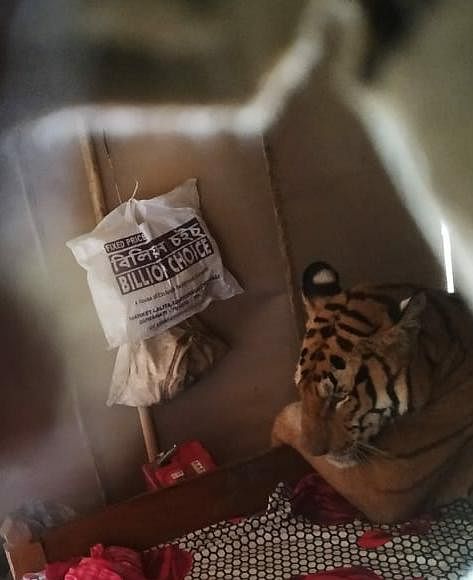
Also read: Citizen science: How India’s conservationists are mapping wildlife to protect it
However, in some years, there is an excess overflow of water causing a deluge. Last week, 90 per cent of Kaziranga (of 430 sq km) was submerged displacing most of its wild denizens to neighbouring areas. Wild animals do possess a sixth sense — to migrate towards the adjoining Karbi-Anglong hills when the river swells. An act of survival embedded into their DNA through generations. But once a smooth getaway for wild animals to the highlands, the animal corridors are now a cramped space with proliferating human habitations, hotels, illegal encroachments and tea estates.
Why did the tiger enter Rafiqul’s shack in the first place? This all-important question is lost amongst the hullabaloo surrounding the tiger — the king resting on a bed. The shack and the adjoining dhaba are just one of the many establishments that have come up in recent years blocking the animal corridor.
This year, the state administration had to impose a curfew or Section 144 for crowd control and provide a safe passage for animals crossing National Highway 37, which runs along the periphery of the Kaziranga National Park.
Hog deer are the biggest casualties every year. Most of them either get drowned or killed by speeding vehicles. This year too the hog deer tops the ‘Animal Death and Rescue’ chart with 71 drowned, 15 killed by vehicles, 10 dead by unknown reasons and over 53 rescued by the forest department. In the list of ‘drowning’ animals are 11 rhinos and one elephant when official reports last came in (20 July, 3 pm). Between 13 and 19 July, park authorities have recorded a total of 141 animal deaths. Actual numbers may be much more according to some experts as it is not humanly possible to document each and every animal mortality. This list also does not include a plethora of smaller mammals and reptiles. Thankfully, floodwaters are now receding.
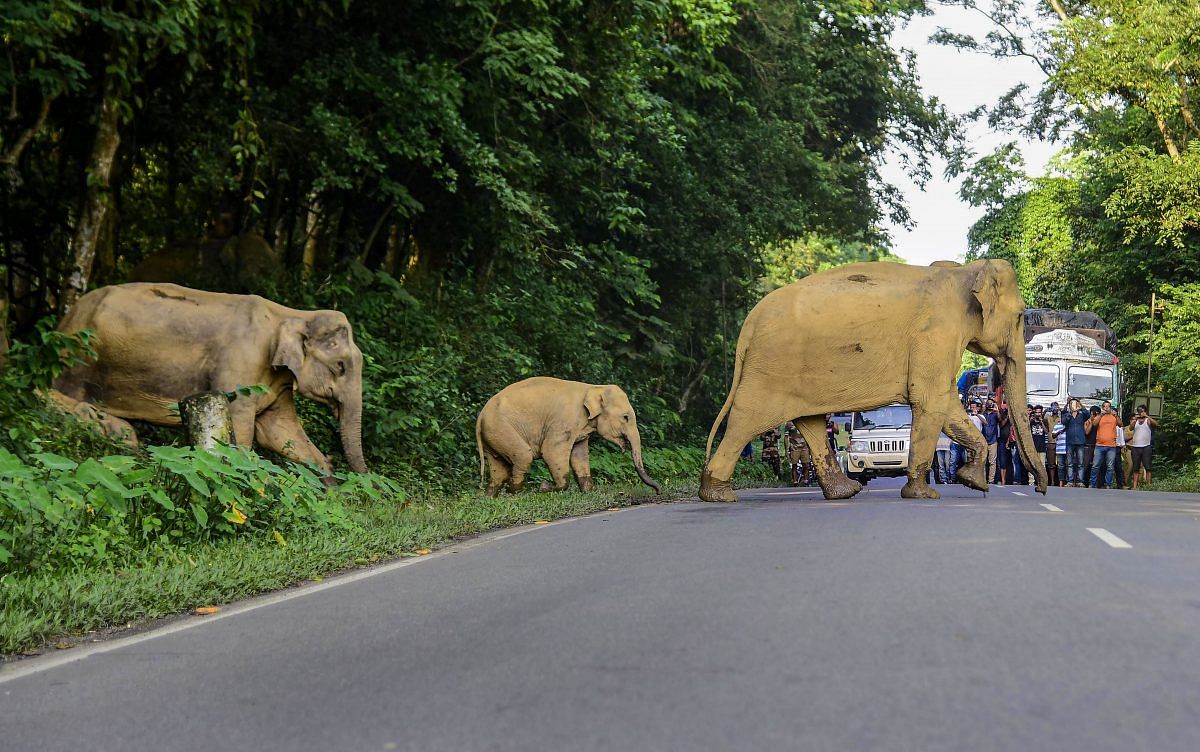
Also read: To protect India’s elephants, we have to preserve wildlife corridors not just forests
The National Highway 37 is the main arterial road crisscrossing Assam, and the stretch along Kaziranga has seen a steady rise in traffic over the years along with mushrooming human habitation, unplanned tourism infrastructure and other illegal structures. The road cuts through the passage between the grasslands and the adjoining highlands – the Karbi-Anglong Hills — leaving animals with no other option but to take the traffic head-on while crossing. And once outside the protected area, the animals are extremely vulnerable to poaching, especially in a region where there is a craving for venison and wild boar meat, least to mention the illegal wildlife trade in rhino and tiger body parts – a constant threat to wildlife in this landscape.
As National Highway 37 is getting widened to accommodate the rise in traffic, wildlife conservationists are asking the state authorities to notify the nine animal corridors that have been already identified. The National Highway Authority of India should construct underpasses (7 metres tall, 500 metres wide) at multiple places along the Kaziranga stretch of NH 37. However, what’s generally agreed on paper, or published in project reports seldom translates to reality. All mitigation projects to provide a safe passage to wildlife are watered down. The standard excuse given is cost-cutting. A recent example is in the reduced number of animal passages where NH 7 cuts through the Kanha-Pench animal corridor. The government watered down its own institutional report citing cost factor.
Last Tuesday, when Kaziranga went underwater, Nitin Gadkari, minister for road transport and highways, was heard complaining in Parliament, saying a poor country like India must decide how far it can go in spending public money to protect the environment. The government is spending Rs 1,300 crore to build nine kilometres in Pench. This is public money, he said. It is up to lawmakers to decide whether it is correct or not. Ironically, the same Narendra Modi government did not hesitate to build a colossal statue (Sardar Vallabhbhai Patel’s Statue Of Unity) with much fanfare costing over Rs 3,000 crore of public money.
Also read: Talk Point: Are rhinos ‘overpopulated’ or is their habitat shrinking?
Kaziranga’s other problems include the ever-expanding illegal stone quarries along the migratory path of wild animals in the Karbi-Anglong hills.
“The Government of Assam has taken no action to close down the illegal stone quarries operating in the Karbi-Anglong hills adjoining Kaziranga National Park and Tiger Reserve (KNP) and within 10 km from the Park boundary. The state has shown no intent to implement the recommendations of the National Tiger Conservation Authority (NTCA) dated April 20, 2018,” says Rohit Choudhury, a local RTI activist specialising on wildlife conservation issues. Choudhary has bagged several awards for his conservation work in the Kaziranga landscape.
Last year, NTCA authorities made a field visit in the adjoining area of KNP based on the complaint by Choudhary and had recommended the state government to ban on all kinds of mining activities in Kaziranga landscape taking into consideration the long-term conservation of this UNESCO World Heritage Site.
Choudhury has been getting favourable orders towards the protection of the Kaziranga landscape from the Supreme Court and its Central Empowered Committee. In April, the Supreme Court banned all types of mining and related activities along the southern boundary of the KNP as well as in the catchment area of the rivers, streams and rivulets that originate in Karbi-Anglong Hill ranges and flow into KNP. The court order also mentions that no permission will be given for any kind of construction even in private lands that form part of the identified nine corridors. Further, the court directed the Director General of Police, Assam, to ensure that no mining activity takes place in the catchment area of Karbi-Anglong Hills ranges. The superintendent of police of the Karbi Anglong Hills District, Nagaon district and Golaghat district will be responsible to ensure that no transportation of illegally mined material from Karbi Anglong Hills takes place.
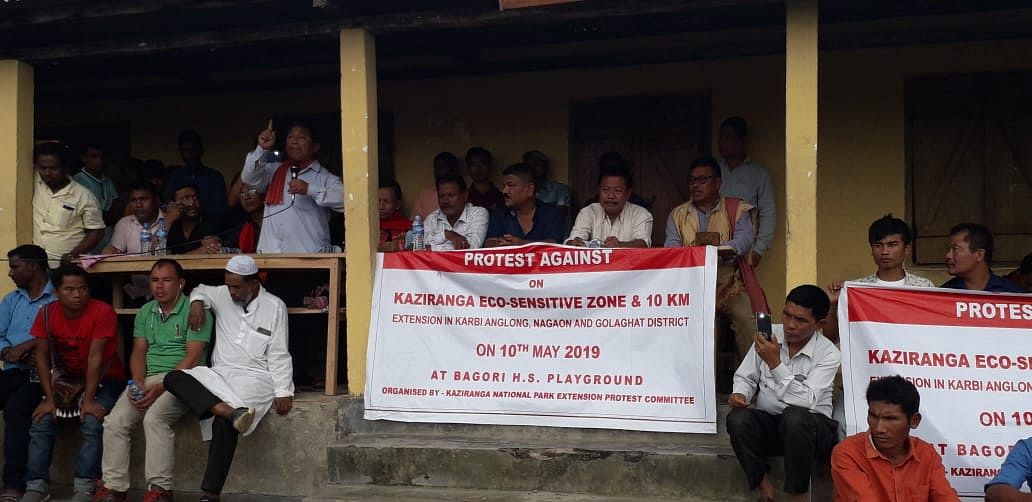
Also read: India thinks it can produce IFS officers by testing them on wildlife more than geopolitics
Taking cognisance of the Supreme Court order, the state chief secretary convened a meeting last month with senior forest officials to discuss the proposed eco-sensitive zone and animal corridors. A draft master plan is to be put up in the next two weeks.
However, the local politician-land mafia nexus has instigated a string of protests against the Supreme Court order as their land banks, resorts, and other business interests (read mining) fall inside animal corridors and the 10 km prescribed eco-sensitive zone.
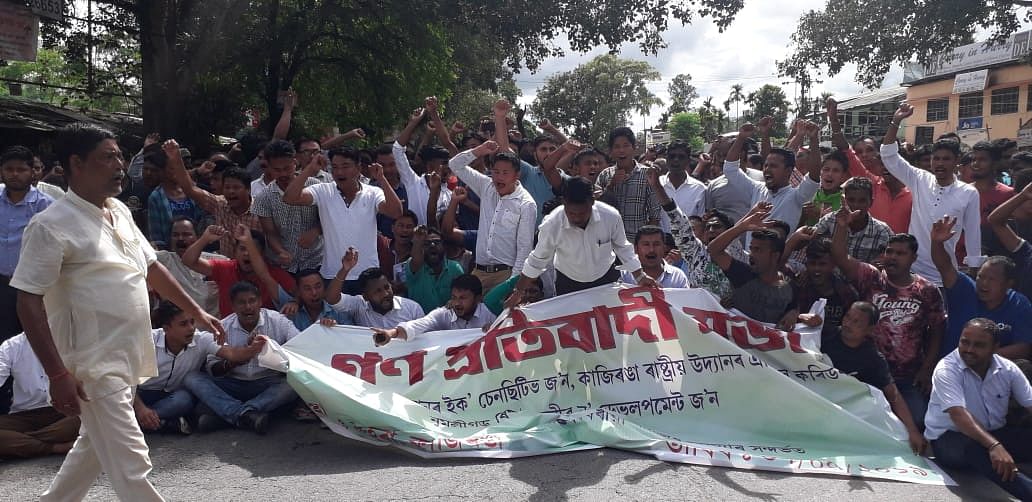
And its seems the chief secretary has already relented to this political-land mafia pressure as he has stated (as per the minutes of the meeting, 27 June 2019), “…in areas of conflict the zero kilometre limitation should be delineated and a minimum of 300/400 metres should be spared where there may be already existent public utilities/ interest.”
Wildlife conservation NGOs have stayed away from this burning issue as it directly affects their existence in the landscape. While several death threats to Choudhary has compelled him to move out of his native place.
The author is a conservation journalist, author and member IUCN-CEC / tweets @protectwildlife. Views are personal.



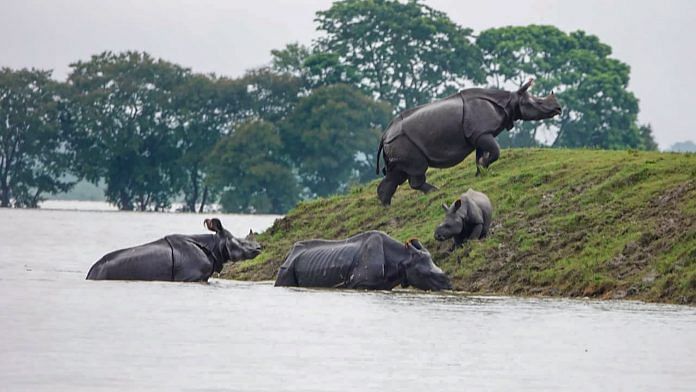



Let us urge with the Env & Forest dept to include East karbi anglong WLs n declare it a very much partof KNP. This will ease burden of the Knp staff guarding the animal that takes shelter in Karbi hills WLS part. I do’t understand why this simple equation is wilfully neglected .
It is absolutely essential that an alternate route like an elevated road is constructed in three to four places that constitute animal migration passages. That should not cost much. Also the raised islands inside the low lying Kaziranga have definitely proven useful. They now have to be planted with indigenious trees and plants.
While I am an animal lover, the question which Nitin Gadkari poses needs an answer.
Can there be crowd funding based on a specific project? I do not know how much money would get collected. But if it is specially meant for say NH 7 connecting Pench and Kanha, has this ever been tried.
All, have you ever been to Kaziranga ? The guide will tell you how the area has been shrinking ! There’s a highway connecting upper & Lower Assam with eateries, resorts dotting all along the road as it passes this sanctuary. You will see a poorly equipped work force, swarming tourists with pepsi cans and tutti frutti, lays potatao chips with women and kids with cheap Chinese colourful hats enjoying the wildlife, poor locals making a living out of this fanfare ……and when all its done, we are talking about space for animals.
I remember about two decades when this hullabaloo wasn’t there, how there was the talk of developing Kaziranga for development of the area with Assam Tourism and Government seminars and news including editorials in the magazines/papers.
Come one, realise that we are extremely short sighted, we all are !! We suck everywhere whenever there is public good and long term planning. We are the THIRD WORLD, it is engraved in our mental state and we need an epoch to change that !
Jai Hind !
Let’s leave the wildlife area for the wildlife. Remove the hotels, leave the roads as they are. We survive because they are surviving.
Let’s just leave them wildlife alone.